The Private Life of Perfume
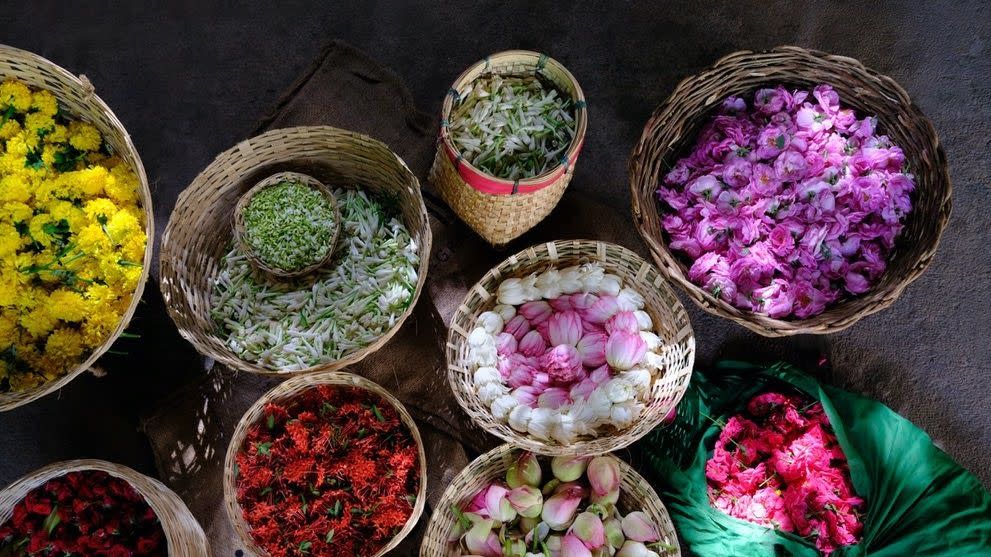
"Hearst Magazines and Yahoo may earn commission or revenue on some items through these links."
If I tell you I have been traveling to India all my life, what I mean by that is in my imagination. In actuality, it has been three decades and dozens of trips taken throughout the subcontinent, to many regions and often for lengthy periods of time. When, as sometimes happens, I think I am finished with India, it soon becomes clear India is not finished with me.
There is always more. And so it took little persuading when a perfumer friend suggested last year that we meet in New Delhi and travel south to the industrial city of Coimbatore. Thereabouts, at the gateway to what is informally called the jasmine trail, lies a patchwork comprising hundreds of towns and villages scattered across the state of Tamil Nadu. Throughout this region, which stretches to the sacred city of Madurai, individual farmers cultivate flowers that are regarded as among the finest and most intensely fragrant in the world; without them many of the best-selling scents in the $50 billion global perfume market might not exist.
As I made my way from my home in Manhattan to the other side of the planet, I wondered if I would ever think of fragrance the same way again, whether I would once again find India as seductively familiar as it seemed on my first visit. Then I remembered there is no one India and that the mother of all clichés is imagining the country to be a unitary entity, when more accurately it is a welter of multiplicities, 28 states and eight union territories, 22 official spoken languages, a Babel of as many as 120 distinct, identified spoken tongues, all united under the tricolored Tiranga flag. Nearly a billion and a half people exist within its borders, and it can sometimes seem as if each inhabits a different India.
Yet for all the plurality, there is an element of the national fabric seemingly common to all its realities and places, and that is the omnipresence in daily life of flowers. If that too is something of a stereotype, it is so for good reason, since in India flowers are intrinsic to the texture of nearly every milestone, from birth to marriage to death.
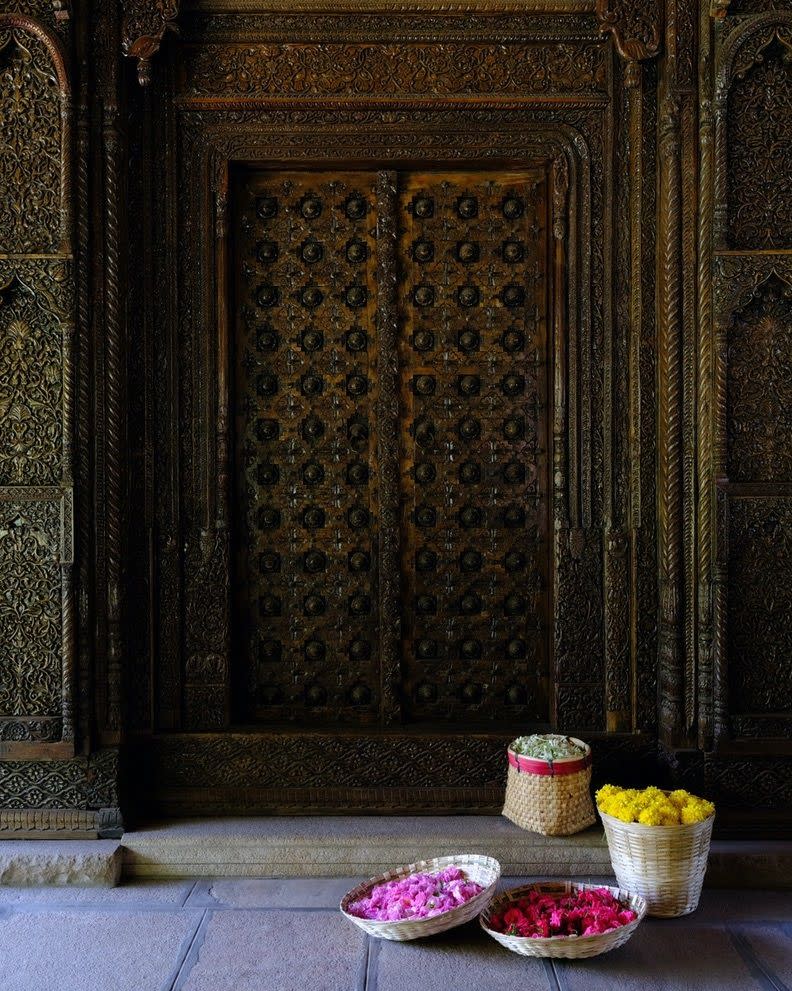
Flowers are present in medicines, rituals, and daily prayers. They are everywhere depicted in religious imagery. They are etched or inlaid in the stones of great monuments, like the Taj Mahal, whose postcard views deprive you of what anyone who has seen it firsthand knows. That is, how abundantly the marble tomb is inlaid with delicate floral motifs, stone images depicting a minimum of 23 different flower species symbolizing, among other things, the four cardinal directions, the five senses, and the six divine attributes of God.
Seemingly anywhere you go in India, there are flowers: dahlias blooming in pots outlining the walled zillionaire compounds of Mumbai and New Delhi; marigolds garlanding deities in Hindu and Sikh temples; jasmine buds knotted into the braid of a young woman riding pillion on a motorbike through the streets of Kolkata.
Of all the many flowers, the one that has drawn my friend Paul Austin and me here is jasmine. In 2018, after decades in the scent trade, Paul partnered with Anita Lal, the entrepreneur behind the lifestyle chain Good Earth, to launch an Indian luxury fragrance house. They called it LilaNur Parfums—the name a fusion of a Sanskrit word denoting a kind of celestial play and the Arabic-Persian word for light—and aimed to pair the best Western “noses” with the finest floral ingredients from the subcontinent. Indian jasmine is a crop that, like tuberose, champac, lotus, and other flowers, is largely grown by smallholders on farmland increasingly pressured by climate change and the creep of a rapidly industrializing nation.
Austin and Lal’s shared goal was to delve into Indian floriculture while showcasing its crucial and largely unknown role in international perfumery, which almost always centers its origin stories on places like Grasse, France, a leather-tanning hub in medieval times and now a modern capital of the luxury fragrance industry.
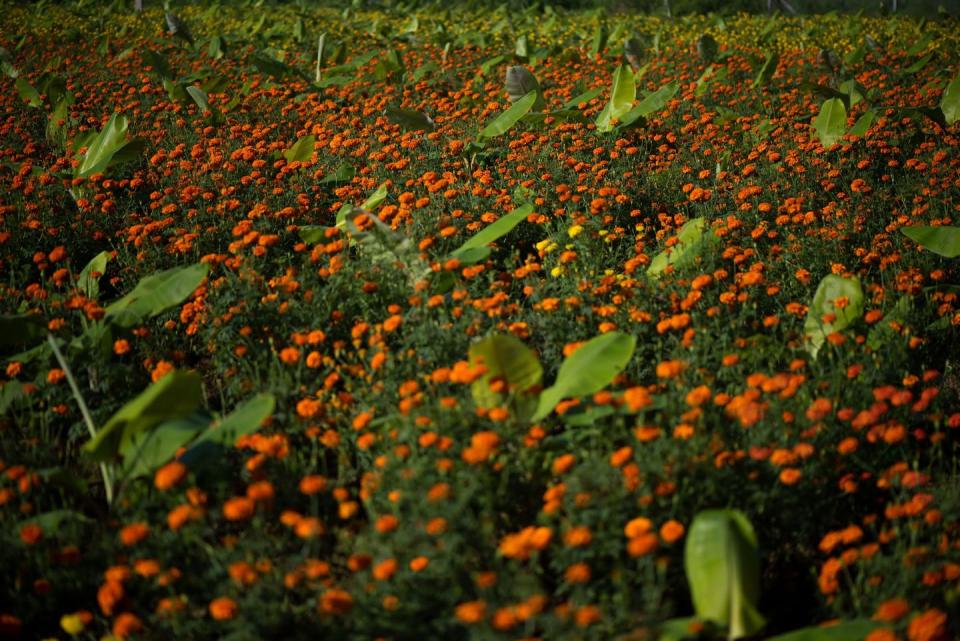
And so it is that Paul and I find ourselves, just past dawn one morning, standing on a hummock in a jasmine field somewhere outside a city often referred to as the Manchester of India, watching flower pickers gather jasmine sambac, a key ingredient in fragrances as diverse as Diptyque’s Olène, Mugler’s Alien, and Tom Ford’s Jasmin Rouge. The exceptional quality of Tamil jasmine is a function of ground chemistry and that element oenophiles are always blathering about: terroir. Here, in this semi-arid tropical region, the well-drained, sandy soils are rich in alkaloids with prosaic names like “jamone” and “alpha-terpineol.”
Somewhere between 160,000 and 190,000 tons of jasmine flowers are harvested annually by thousands of farmers in this region. And while much of that of yield is sold retail as blossoms and buds for garlanding deities or humans, a large percentage is destined for the production of jasmine concrete, the extract utilized everywhere in perfumery, as well as of its more densely concentrated and costly form, a substance called jasmine absolute.
Malli Insolite
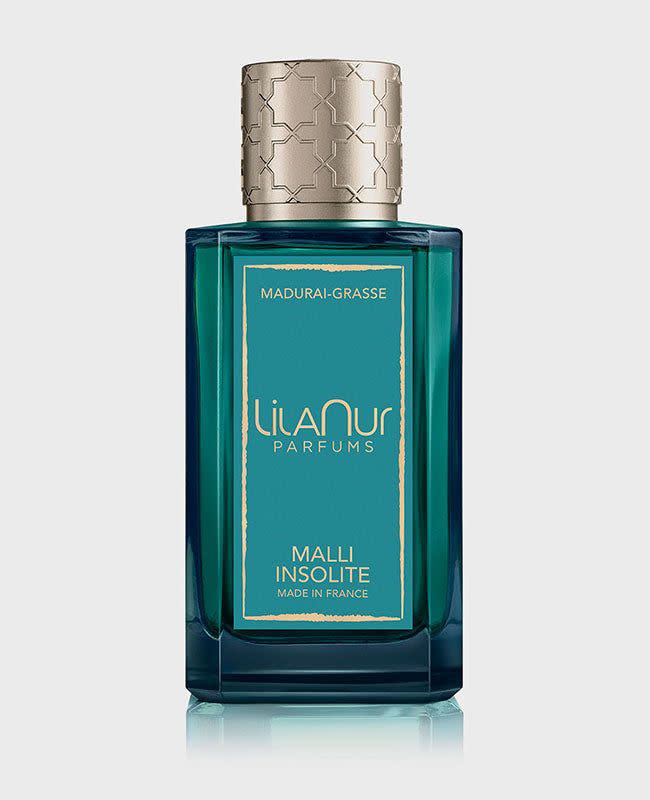
Malli Insolite
lilanur.com
$285.00
Olène Eau de toilette
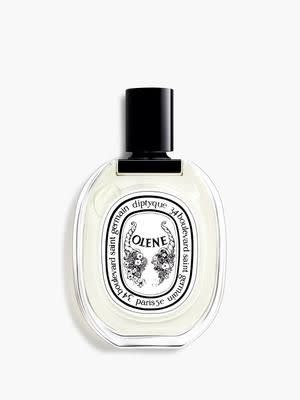
Olène Eau de toilette
diptyqueparis.com
$180.00
Alien
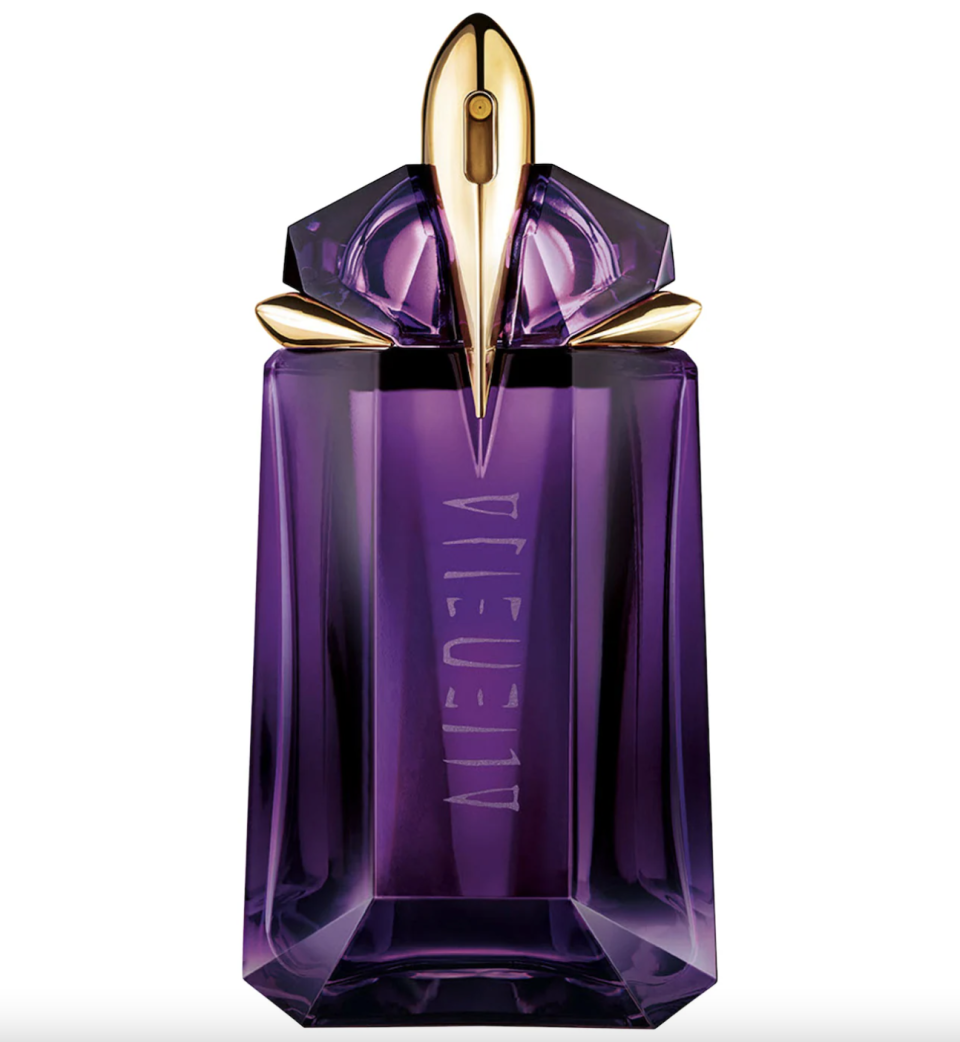
Alien
sephora.com
$185.00
Jasmin Rouge
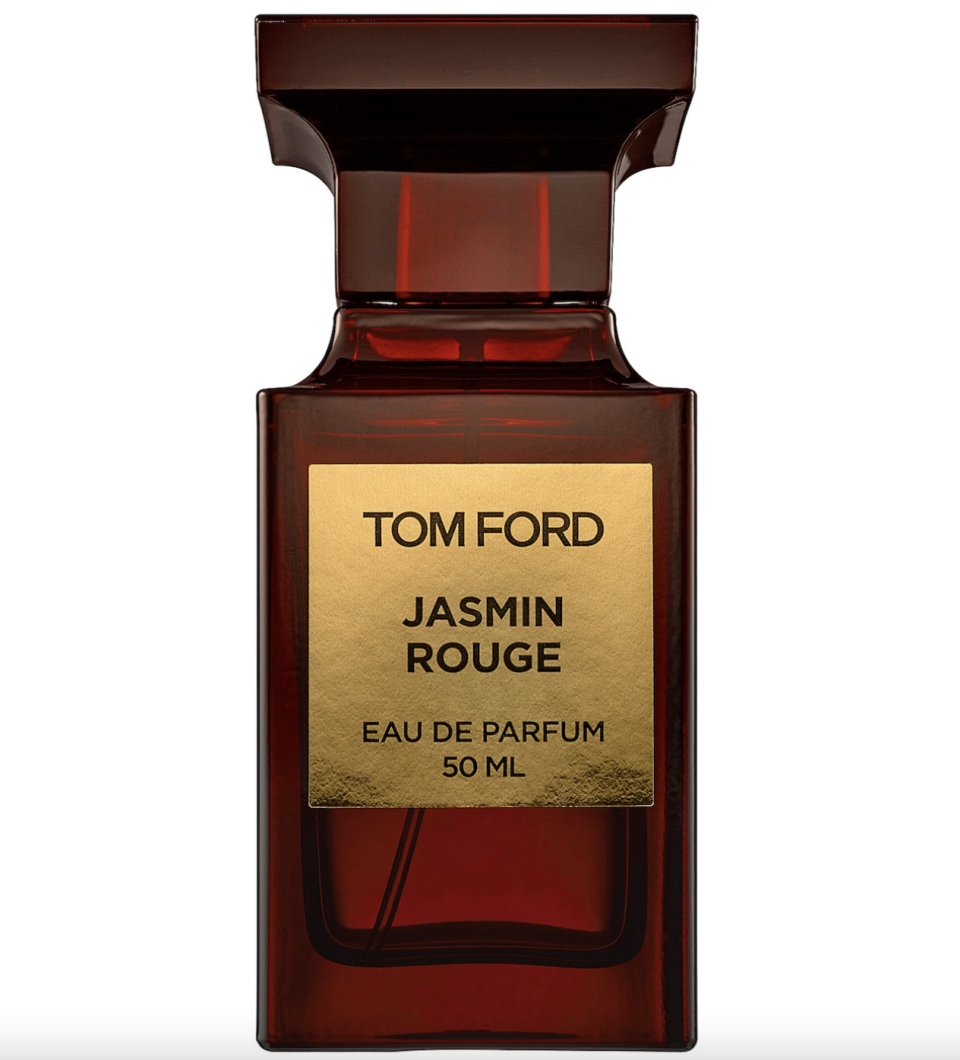
Jasmin Rouge
sephora.com
$425.00
The principal cultivars used to create these industrial products are night-blooming royal jasmine (Jasminum grandiflorum) and the Arabian jasmine variant (Jasminum sambac). The former is a variety whose tiny flowers fleck the bosomy, leather-leafed bushes that are all around us this morning, planted on hill rows through which a dozen or so pickers in saris silently gather the day’s harvest in burlap sacks.
The farm itself is owned by a local villager who is part of a network of suppliers contracted to Jasmine CE, a company run by the cousins Raja Palaniswamy and Vasanth Venkatasamy that manufactures and exports floral extracts and essential oils. It is one of many such concerns in Tamil Nadu, but one of the few whose relationship to social responsibility meets LilaNur’s standards, no small thing in a business with a historically less than fragrant track record in environmental and worker safety.
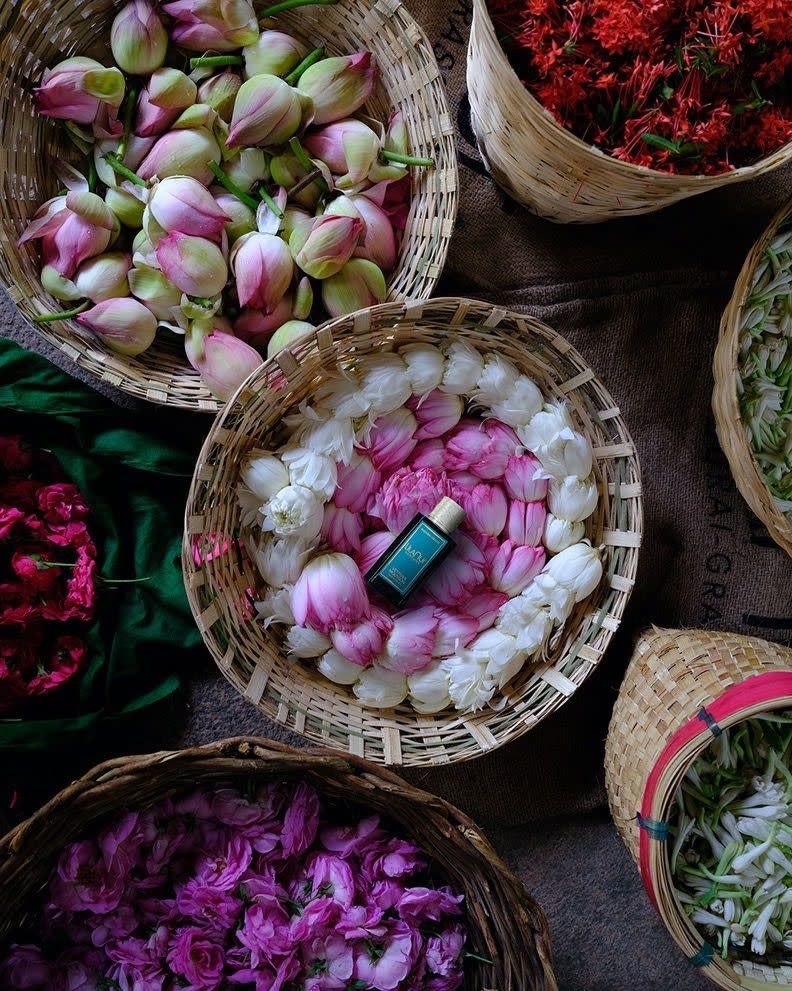
Today the jasmine is being picked by local workers, mostly of the Dalit caste (formerly called untouchable). Once their sacks are filled, these will be weighed and transported as rapidly as possible before the freshness fades—anywhere between six and nine hours—to the Jasmine CE factory to be processed by the ton. When I inquire how many flowers go into a ton, there is no ready answer. And so what I am left with is an imaginary film montage in which bales rise to small hills of individually plucked blossoms, flowers by the millions are emptied into vast steel sieve drums, huge quantities of vegetal matter are washed and dried and then processed with a chemical whose explosive fumes if ignited could easily flatten a town, to arrive at last at a slab of pure fragrance smaller than a hockey puck and costlier by the ounce than gold.
Logically enough, images like this seldom figure in the gauzy commercials promoting the latest cologne. No one besides industrialists, middlemen, and farmers thinks much about the sources of ingredients. Neither did I, when randomly stopping to spritz some scent at the duty-free counter.
And despite my many journeys to India, most of them in recent years to Tamil Nadu, I never gave a moment’s thought to the jasmine and tuberose everywhere around me. Now, standing in a field fringed by banana palms and rice paddies, I flick through mental slides of all my earlier trips and what I had gazed at and posted to social media, and never, in fact, truly seen. I had not, for a start, considered that jasmine, this flower “sacred to Hindus, Muslims, and Christians,” as my friend Uma Kannan put it, is botanically related to the olive. Or that “no major puja, no ritual, no festival is complete without it.” Over a luncheon thali at her family compound, nestled amid the honking commercial hub of Madurai, one afternoon, Uma explains that while specific deities from the hundreds in the Hindi pantheon have their own floral preferences, “jasmine can be offered to all.”
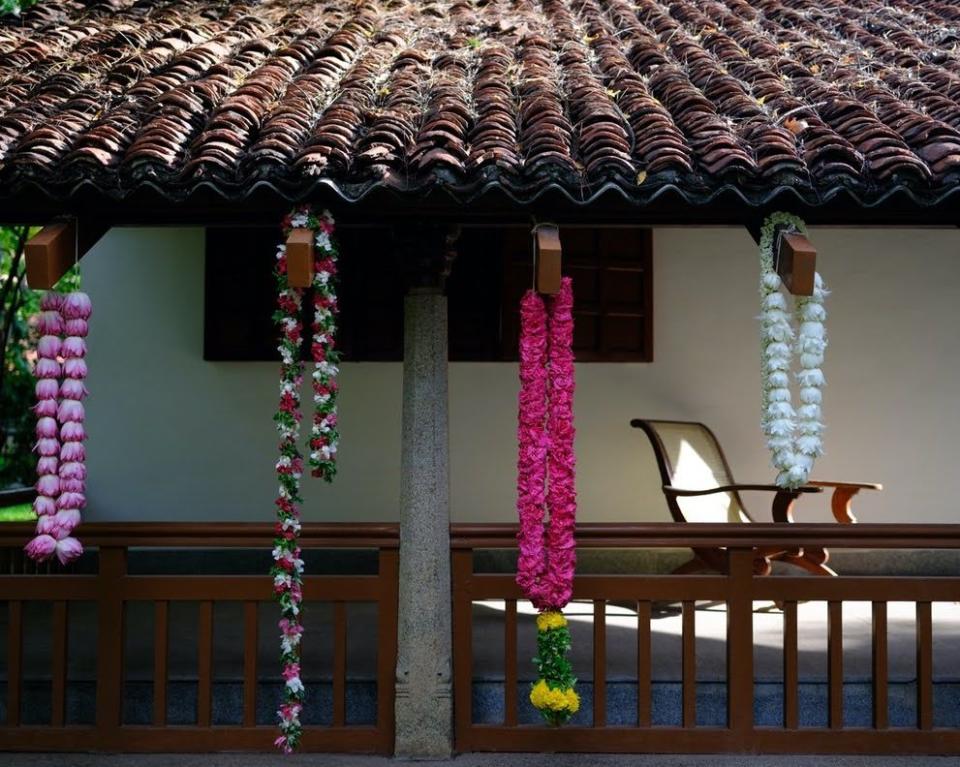
Uma is a preservationist, the president of Thiagarajar College in Madurai, a producer of jasmine absolutes—one of the few women in that industry—and, more crucially, the author of Madurai Malligai, a book-length exploration of the jasmine flower and its origins. From her I learn that yasamin is the name by which Arab traders plying the Coromandel Coast long before the Christian era knew the flower; that in Tamil it is called malli or mallipoo, poo being the word for flower; that references to it can be found recorded in ancient Tamil palm leaf manuscripts and also in the oldest of Hindu scriptures, the Vedas.
I learn that at flower markets like the open air one Paul and I visit on the outskirts of Coimbatore, immense quantities of flowers change hands every day, sold by farmers through commission agents sitting cross-legged in stalls, tallying by hand their ongoing ancient trade in marigolds, tuberose, waterlily, rose petals, cockscomb, asparagus creeper, and at least 10 varieties of jasmine. I learn that the flowers are sold as buds or in pre-threaded loose strings called muzham—a measure equivalent to the length of an arm.
During an earlier visit I learned, on my own, the hard way, that leaning in to smell the flowers at the market will bring you in for a sharp reprimand from the vendor.
“Many of the flowers are destined for use in the daily worship, or to adorn the gods in temples,” Uma explains. Deities take precedence. Once a human has smelled it, the flower has lost its purity and it is unfit for the gods. From Uma’s richly illustrated book I learn, too, about the wholesale and retail trades in jasmine, as well as the intricate craft of weaving garlands known as malligai, beautiful things that can be found at most markets in South India, strung by vendors who have their own signature designs.
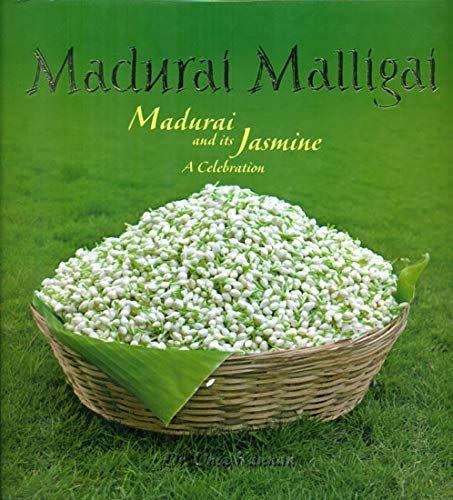
Madurai Malligai: Madurai and Its Jasmine
amazon.com
$39.22
“When I first started going to Madurai and Thanjavur and other parts of South India, it was all about the transparent dazzle of abundance,” Paul tells me one morning as our chauffeured Toyota SUV speeds along the well-paved road between Dindigul and Madurai. The route follows rural lanes lined with tile-roofed houses, past cashew orchards and crumbling temples, and the occasional shallow lake fringed with marsh grass and scrub trees where perched white cattle egrets look like windblown hankies.
“Do you know that connection you get in certain locales?” Paul asks, though we both know this is not a question. “This all speaks to me on a visceral level, and not just because of the lush palm trees, the feverish humidity, the incredible food, the ancient sculpture, the lavish history, the countless fragrances.”
What is it, then? “India is a sensual culture,” he says, “and, at least in the South, you enter this realm of the senses.”
What I take him to mean is that feeling you have when, having been kept too long from the wonders of the physical universe by our forced immersion in a barren digital one, you find yourself suddenly plunged back into real life. When your vision adjusts again to unfiltered colors and when, in an embarrassingly literal sense, you stop and smell the flowers. Or, anyway, the small white blossom one length of which, hung from the rearview mirror, now fills the car with its intoxicating perfume.
“This probably sounds a bit crazy,” Paul says. “But do you know what I’m talking about?”
“Not crazy at all,” I reply.
This story appears in the May 2024 issue of Town & Country, with the headline "The Private Life of Perfume." SUBSCRIBE NOW
You Might Also Like

